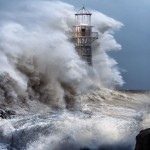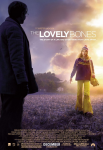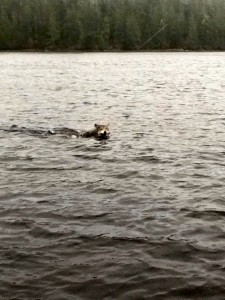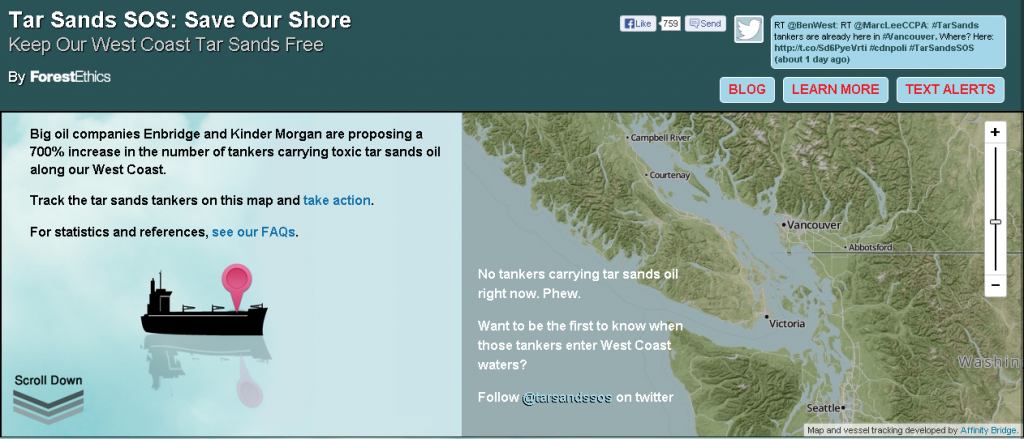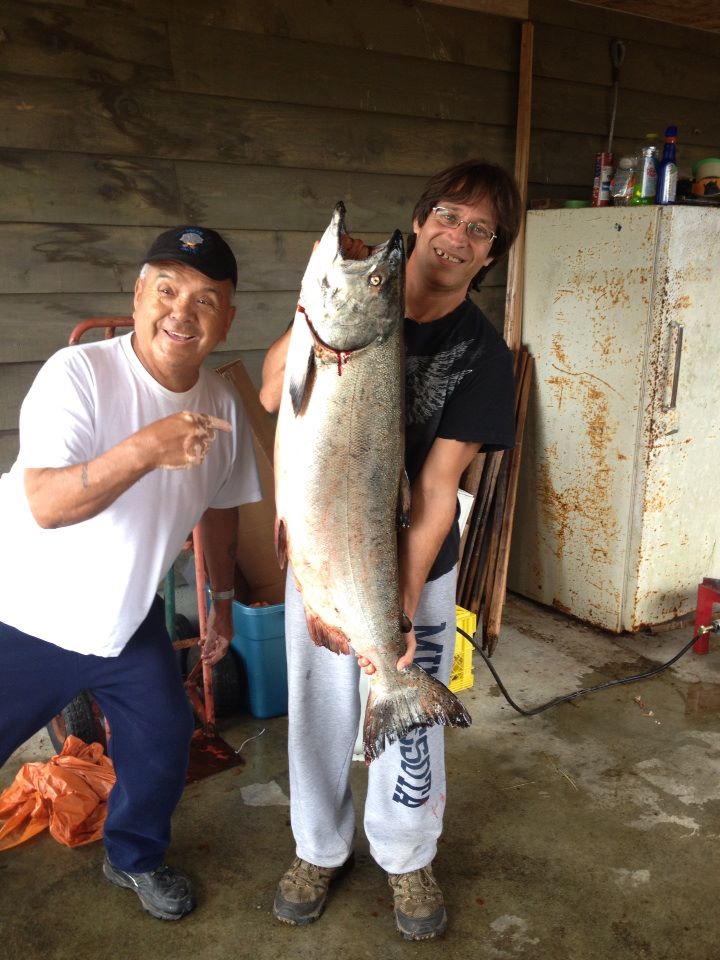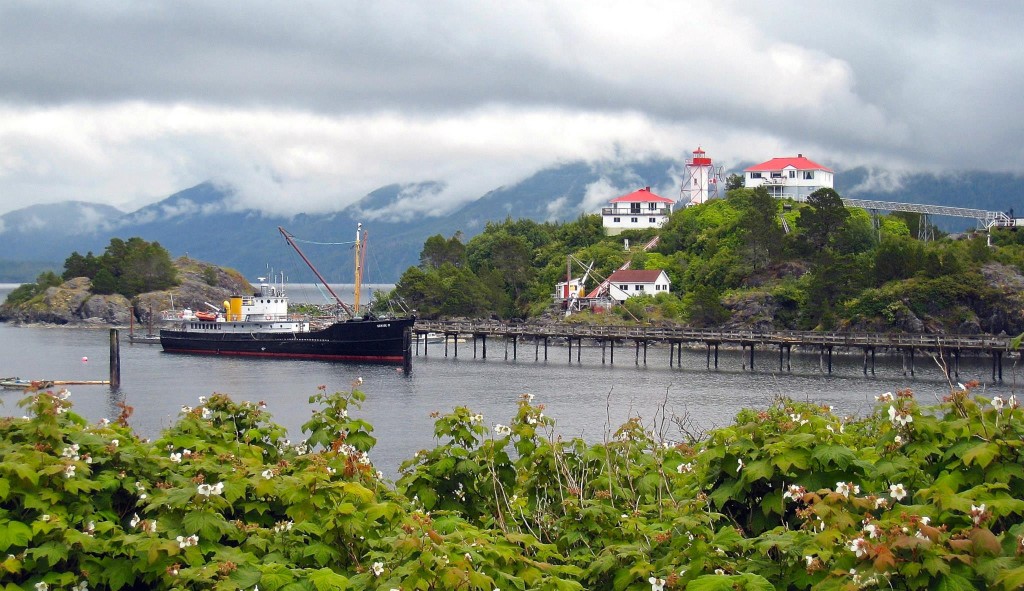 Facebook (FB) is a great place for finding lighthouse photos, and many marine related sites such as West Coast Fisherman are also a big help. Yesterday a man I had never met before posted the photos above and below. Please give many thanks to Gordon Tolman for the photos of the MV Uchuck III with a background of the Nootka lighthouse. Continue reading Nootka Island
Facebook (FB) is a great place for finding lighthouse photos, and many marine related sites such as West Coast Fisherman are also a big help. Yesterday a man I had never met before posted the photos above and below. Please give many thanks to Gordon Tolman for the photos of the MV Uchuck III with a background of the Nootka lighthouse. Continue reading Nootka Island
Category Archives: First Nations
Mise Tales Forty-Six
For an update on what a Mise Tale is then please see Mise Tales One.
As mentioned earlier on the front page of my website, any photos or cartoons, or short bits of information, when it is removed from the front page, will also be included again later in the next next Misc Tales posting. That way you can keep track of it, search for it, or copy it.
************************************
The Lightkeeper’s Wife – Sarah Johnson’s salty debut novel, The Lightkeeper’s Wife, is everything historical fiction should be: an ode to a simpler period and place (in this case, 19th century Cape Cod), while complicating issues that are relevant today – making and breaking gender and sexual norms. – see more
Lady pirates & lighthouse keepers cross paths in Provincetown writer’s new novel
**************************************
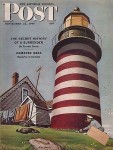 Are you into collecting lighthouse memorabilia?
Are you into collecting lighthouse memorabilia?
Here’s the September 22, 1945 issue of the “Saturday Evening Post,” featuring West Quoddy Lighthouse. It’s for sale on Amazon. – as mentioned by Elinor DeWire on Facebook
******************************************
Interesting reading – The Lighthouse of Strombolicchio in Italy http://www.amusingplanet.com/2014/09/the-lighthouse-of-strombolicchio.html
******************************************
28 Breathtaking Photos Of Lighthouses That Have Stood The Test Of Time – the title explains it all – wonderful photography, beautiful lighthouses worldwide!
***************************************
 Great Bear Wild is a photo and movie documentary about the undersea life that controls the Great Bear Rainforest on the west coast of British Columbia, Canada.It explains why we must keep this part of our coast pollution free.
Great Bear Wild is a photo and movie documentary about the undersea life that controls the Great Bear Rainforest on the west coast of British Columbia, Canada.It explains why we must keep this part of our coast pollution free.
Reprint – In the Sanctuary of the White Bear
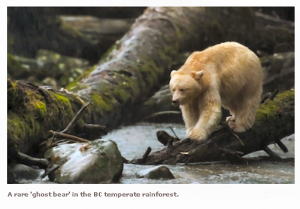
A rare white ‘spirit bear’ in the BC temperate rainforest. Photo: Ian McAllister / pacificwild.org.
In the sanctuary of the White Bear by Canadian Poet Lorna Crozier
17th November 2013
Poet Lorna Crozier vists the Great Bear Rainforest in BC, Canada and finds a fragile paradise imbued with myth, meaning and magic for local indigenous peoples.
Above the stench of rotting salmon, my smell has been drawn into a grizzly’s nostrils, through the nasal passages inside his long snout. Part of me now lives inside the mind of an omnivorous animal whose Latin name ends with horribilis.
The bear is here for the salmon, who have returned to the rivers of their birth to spawn and die. We’re here for the bears.
Photographer/filmmaker Ian McAllister has joined my husband Patrick and me on our first morning to help introduce us to his home turf, the Great Bear Rainforest, a tract of land that follows B.C.’s coastline from the tip of Vancouver Island to the Alaska Panhandle. He and his wife Karen run the Pacific Wild conservation group to protect this astonishing piece of wildness that they’ve known intimately for over twenty years.
The largest intact temperate rainforest in the world, the traditional territory of the Kitasoo / Xai’xais First Nation, this region is only two short flights from Vancouver. But we are as far from a city, as far from ordinary life, as you can get. . . . more
This essay originally appeared in Toque & Canoe, and in Counterpunch.
[private]With seven others, we’ve been bounced across the ocean to our riverside destination in an old forestry boat. At home, most of us can’t spare the time to meet a friend for coffee, but here we’ll wait side by side, motionless and quiet, for several hours in the drenching rain.
Two guides armed only with pepper spray keep watch over us. They assure us they’ve never had to use it. Their confidence and my excitement make me tuck any fears I have away – into a back jeans pocket I can’t reach under my layers of hoodie, vest, jacket and rain gear.
All of us crouch with binoculars and cameras, careful not to sink our knees into a salmon. Hundreds of them, tossed by bears from the river, are turning into a foul mush. When the grizzly appears again, about twenty feet across from us on the other shore, we know Ian is getting the best pictures. We keep snapping anyway.
Our group is staying at the First Nations-owned and operated Spirit Bear Lodge located on the ocean’s edge in the fishing village of Klemtu.
Through its tall windows, we scan what looks like a National Geographic documentary. Pointing out seals and eagles, we and the other guests, most of them from Europe, crowd around the window like kids around an ice-cream truck.
Maybe if we’re lucky, at dusk, we’ll see one of the wolves unique to the western coast. Along with deer, they catch salmon.
The lodge is modeled on the traditional long house and it’s named after the elusive white bear called the ‘Spirit Bear‘.
Raven, the traditional story goes, made one out of every 10 black bears white to remind us of the ice age. This unique creature is here to make us grateful: the world wasn’t always as green and lush as it is today.
Every morning, rainforest life generously comes to meet us. Five senses aren’t enough to take it all in.
Isn’t this what Canada’s all about? Barely inhabited, out-of-the-way places that remind humans who we were before we became so fearful, so tame? Before we became so destructive as a species?
As twilight falls, we return to the lodge by boat for its scrumptious dinners, the halibut so fresh that the name of the man who hooked it and the date he did are listed on the menu. Manager Tim McGrady – fierce in his love of this watery ecosystem – greets us at the dock and asks what we’ve seen.
Over the 12-foot-long cedar dinner table, Patrick and I go on and on about a mother and a baby humpback, the mother slapping her tail repeatedly on the taut skin of the ocean. Was it whales who invented drumming?
Five minutes later, we would see two Orcas knife through the water. Then we understood. The humpback was warning her nearby pod and scaring off these skillful hunters who might have targeted her calf.
The next day, I travel up the ocean channel to an old crab apple grove where a spirit bear might appear. Patrick chooses a shorter trip. In my case, the spirit bear lives up to its other name – ghost bear – and stays invisible.
But Patrick sees a grizzly flop on her back to feed her triplets, so close a camera catches a drop of milk on her nipple when one cub tumbles off her belly.
I’m jealous. But an afternoon boat trip on the Pacific makes up for what I missed.
Patrick and I watch two humpbacks blow an elongated oval of bubbles to trap shrimp-like krill. The whales then rise to the surface through the centre of this airy net, their magnificent mouths wide open, catching their meal.
Looking down a whale’s gullet makes me shiver. Boy, how small I am!
On the day a storm blows in and the boats can’t go out, Doug Neasloss, the visionary behind the lodge, invites us into the Big House in Klemtu and tells us the history of his people and the work they’re doing to protect their homeland.
In 2012, they declared their territory off-limits to trophy hunting of bears (even though the B.C. gov’t allows it). Then, with other Coastal First Nations, they made a film about a grizzly skinned and left to rot in a field, head and paws carried out past a sign banning such hunting.
The timing of the film is sadly relevant. Just before its release this past September, The Vancouver Sun published photos of a defenceman with the NHL’s Minnesota Wild – how ironic is that name? – holding the severed head of a grizzly he shot in a rainforest estuary.
The tenderness the Kitasoo / Xai’xais feel for their culture and their home territory is palpable. We hear it in our skippers, who are all from Klemtu, and in Sierra, a grade 11 student who’s one of the lodge’s guides-in-training.
Every night in bed, she reads one of her people’s stories, and in her dreams, she’s in the story, walking among the humans and the creatures of the forest. The humans and the animals are talking to one another.
Many believe the Spirit Bear has special powers, she tells me.
Having sunk into the moss floors of the forests, having been held in the mind of a grizzly and the eye of a whale, I’m O.K., this time, to have missed Raven’s reminder of the ice age.
I’m sure there’s another reason for its creation, a reason that will sink in after I’m back home.
To many who live here, this singular being is an emblem of the sacredness of the rain coast and its vulnerability. They fear for potential oil spills in the area.
To them, this nightmare is a real and present danger as various levels of the Canadian government debate the sanctioning of oil tanker traffic through this delicate ecosystem.
They imagine the white bear soaked in oil, rivers and estuaries thick with crude muck, salmon thrashing in its slick, and orcas smeared with bitumen.
I’ve fallen under the spell of this rare sanctuary where salmon are born and die, where wolves have learned to swim and fish, and where mist may turn suddenly into the lumbering body of a mystic bear.
How diminished, how thin-hearted, how lonely we are as a species if there aren’t safe places in the world where the unique, the magnificent, can survive.
Postscript: The day after Patrick and I arrived home, Oliver from Germany, one of our companions who’d stayed an extra day at Spirit Bear Lodge, wrote that he did see a Spirit Bear. It stepped out of the moss-draped trees onto the stones of a river where he was set up with his camera on the other side. How thrilled he was. He’s seen what few people in his country, what few people in Canada or in the world, have ever seen. Check out thislink to his images
Lorna Crozier is a Canadian poet and holds the Head Chair in the Writing Department at the University of Victoria.
This essay originally appeared in Toque & Canoe, and in Counterpunch.[/private]
Bravo! Coastal Rainforest in British Columbia Now Protected!
This photo above from Pacific Wild shows only a part of what is being protected
The title for this article comes from a news release by the Treehugger website on July 27, 2006.
Their article from 2006 said: “The government of British Columbia has agreed to protect more than 5 million acres of the Great Bear coastal rainforest. It is home to the world’s last white-colored Spirit Bears “
The Natural Resources Defence Council (NRDC) was also quoted in the article.
The thousand-year-old red cedars, Sitka spruce, western hemlock and balsam blanketing this swath of rugged coastline provide vital habitat for wolves, eagles, grizzlies and several hundred Spirit Bears. Found only in the Great Bear Rainforest, the Spirit Bear gets its white color from a recessive gene occurring in roughly one of every ten black bears born in the forest. The Spirit Bear figures prominently in the mythology and culture of several indigenous communities — known as First Nations in Canada — that have inhabited the Great Bear Rainforest for thousands of years.
The new conservation agreement, negotiated directly by the British Columbia government and the region’s First Nations, will protect an unspoiled area twice the size of Yellowstone National Park from logging and ensure the right of the First Nations to manage their traditional territories. In addition, the agreement establishes new, more stringent standards for logging in the rainforest outside of the protected area. “The accord will preserve this irreplaceable rainforest but still allow for controlled logging to sustain local economies,” said NRDC senior attorney Susan Casey-Lefkowitz. “It is a new model that shows we can save our most valuable wildlands and our communities at the same time.”
********************* Continue reading Bravo! Coastal Rainforest in British Columbia Now Protected!
Now You Have to Cook Them!
After posting the story Then You’ve Got to Clean Them! I obtained permission from Pacific Wild to use some photos showing the cooking of the salmon by the people in Bella Bella, British Columbia (BC). These pictures just made me drool. The people were cooking planked salmon which has to be one of the tastiest ways of cooking salmon over an open fire. See the photo and gallery below:

[nggallery id=79]
The photos above are in no set order – just as I downloaded them. On the lighthouse we used to cook the salmon many ways but this was the most fun, and the tastiest. Continue reading Now You Have to Cook Them!
Mise Tales Twenty-Eight
For an update on what a Mise Tale is then please see Mise Tales One.
Has anyone seen the movie released in 2009 entitled The Lovely Bones? It features a fictitious lighthouse marking the entrance way to heaven in a thoroughly entertaining film.
“Centers on a young girl who has been murdered and watches over her family – and her killer – from purgatory. She must weigh her desire for vengeance against her desire for her family to heal.” – IMDb
There is one strange thing about this lighthouse – the light in the lantern revolves counter-clockwise (CCW)! This is most unusual and there are only a few lighthouses in the world that revolve CCW, the majority revolving clockwise (CW).
A couple I found were in Australia. Does anyone know the whys and wherefores of CW vs CCW rotation of the lamp? I think this deserves further investigation and maybe a future article. Thanks for any help you can contribute. Continue reading Mise Tales Twenty-Eight
Wildlife and Spirit Bear Adventures
When I wrote the story A Wolf At McInnes I never really explained how the wolf got on to McInnes Island, so today I am going to combine two stories into one. Firstly, the wolf swam from nearby Price Island over two (2) kilometers away, probably island hopping to catch its breath. Pictured below and in the album are photos of wolves swimming taken by photographer Leanne Reandy, a staff member of Spirit Bear Adventures, on a trip back to Klemtu from Bella Bella, BC.
[nggallery id=78] Continue reading Wildlife and Spirit Bear Adventures
Tar Sands SOS: Save Our Shore
The photo above is a screen capture of part of the Tar Sands SOS webpage. Click the photo above to go to the webpage and you can track the tar sands tankers on the interactive map, scroll down the webpage and learn more why the tar sands tankers are a bad idea. One thing I learned is that tar sands oil sinks to the ocean bed rather than floating up on the beaches. This lengthens the time the oil can pollute British Columbia waters!
I have seen an oil spill personally – it is not a pretty sight!
Inside Passage Ferry Trip to Visit Some of the Lighthouses
The idea for this story came from an article in the Vancouver Sun newspaper. I asked for permission to reprint it here for all to see, and they said I would have to pay them. This was an article about the Inside Passage ferry trip with mention of a couple of lighthouses – very few actually. I am not even going to mention the title of the story – how can they turn down free advertising. 😉
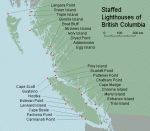
When you visit Canada do you plan on seeing some lighthouses? We have twenty-seven (27) manned lighthouses on the west coast of British Columbia (BC); Canada. There are other unmanned lighthouses that are available for viewing also. You can see some of them if you wish with the BC Ferries, plus enjoy wonderful trips through BC waters.
The Inside Passage
Let us start with the longest trip first. How about fifteen (15) hours on a luxurious ferry in daylight so that you can make many photos. Fifteen hours may seem like a long time, but there is so much to see that time flies by, especially if the weather is fine.


There are two ferries on the route (2013) – the Northern Expedition and the Northern Adventure. You can actually follow them live on this website.
Continue reading Inside Passage Ferry Trip to Visit Some of the Lighthouses
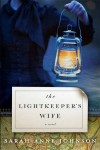
![strombolicchio-4[6]](https://ccanadaht3.com/wp-content/uploads/2014/12/strombolicchio-46-150x99.jpg)
